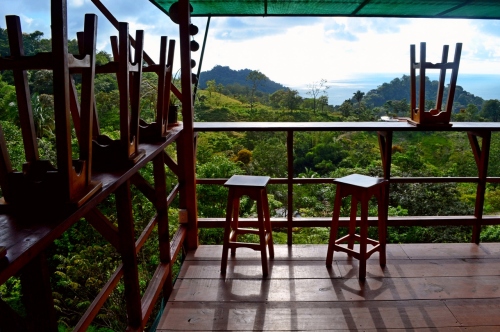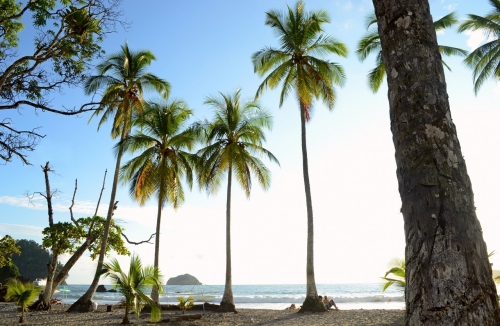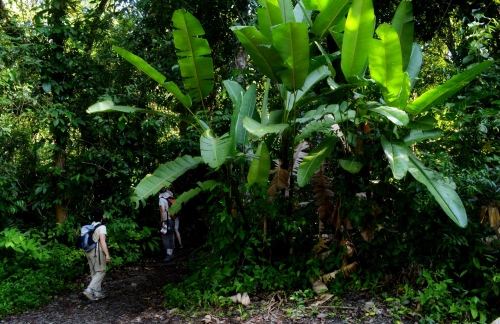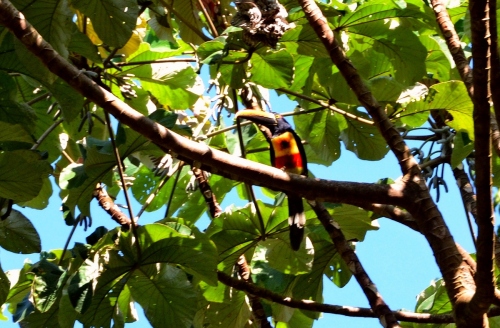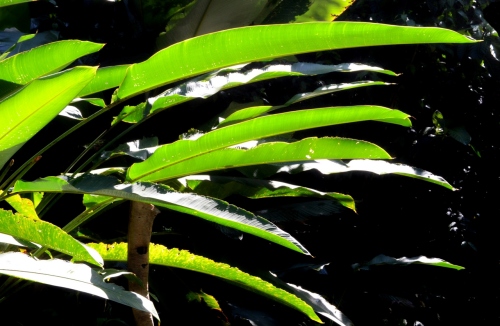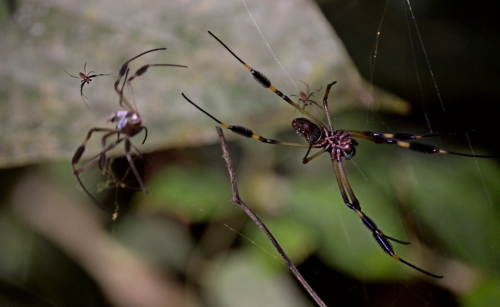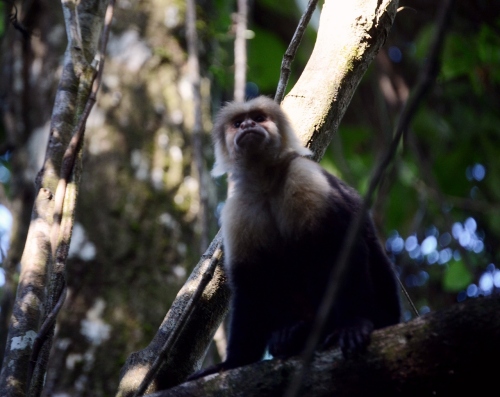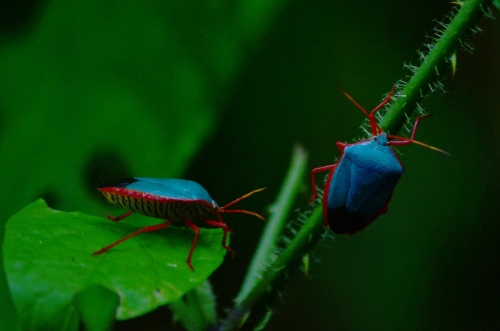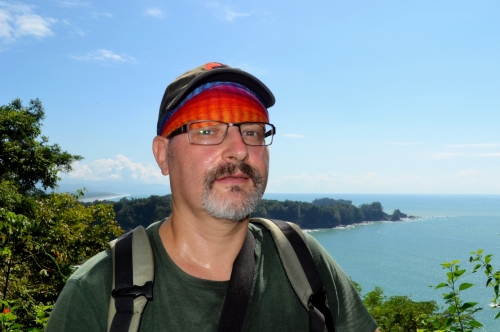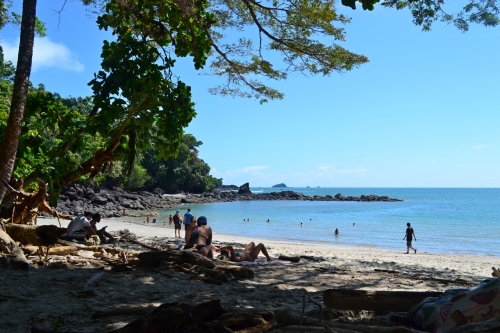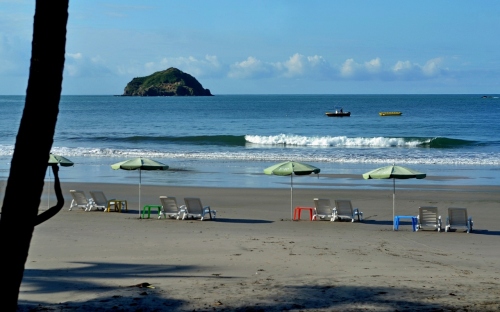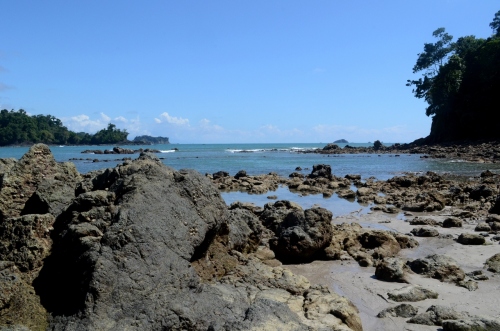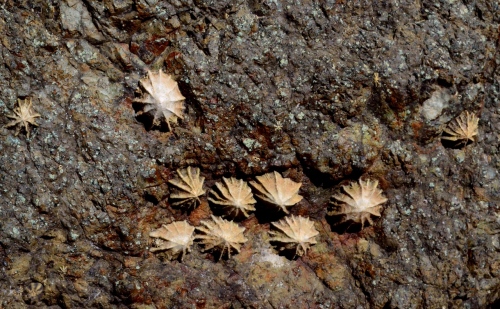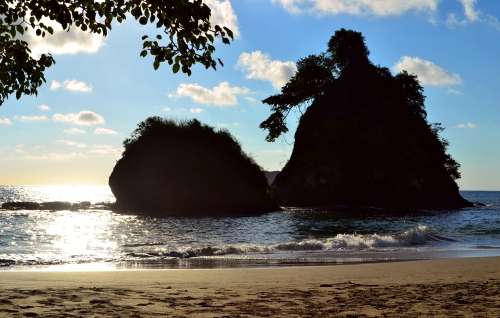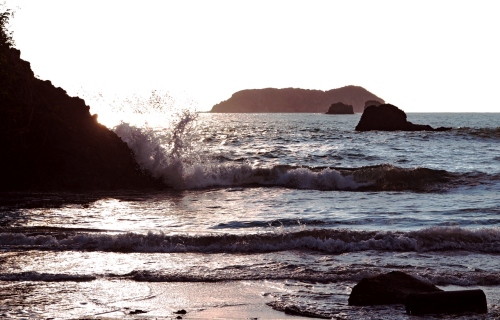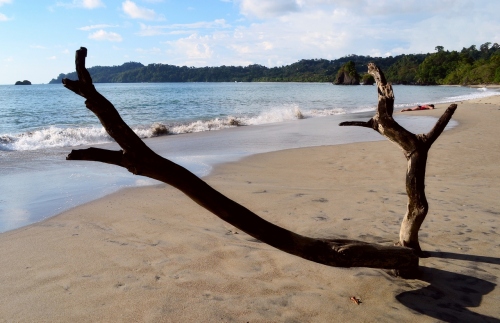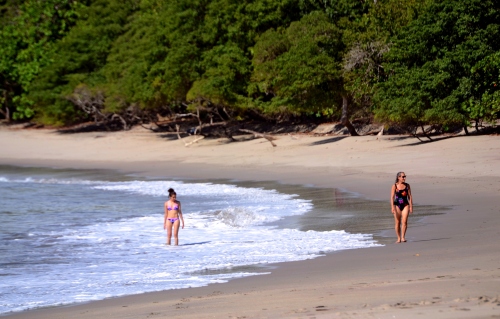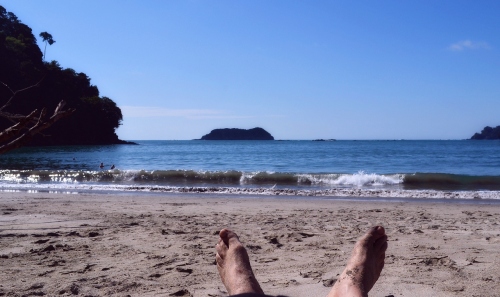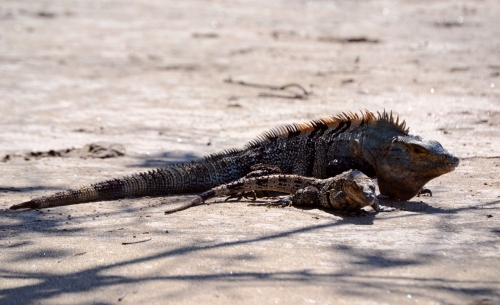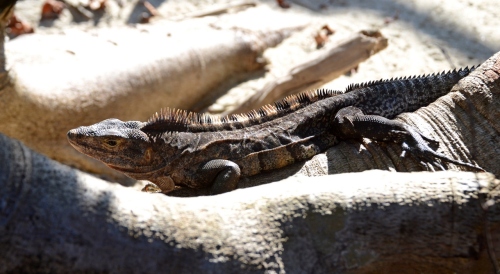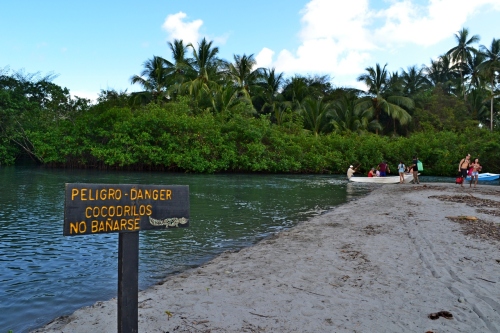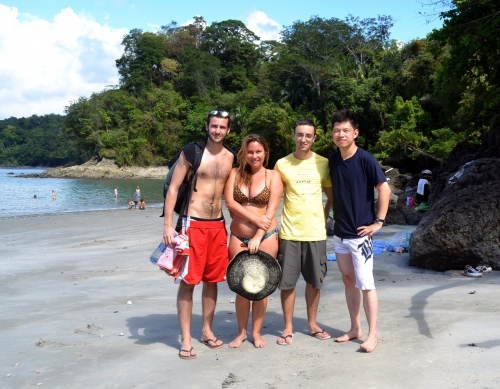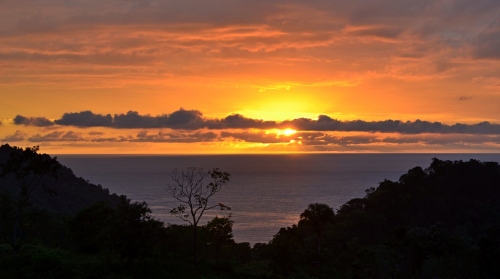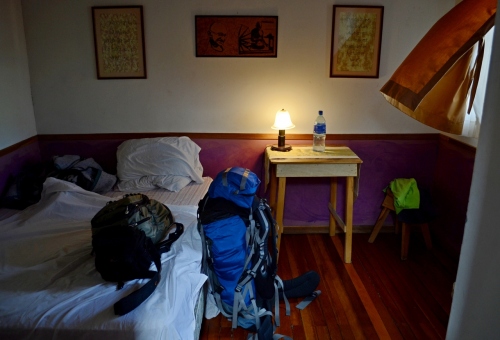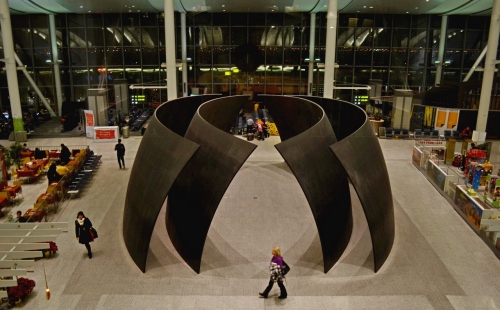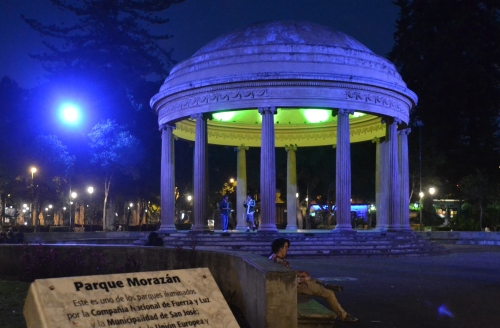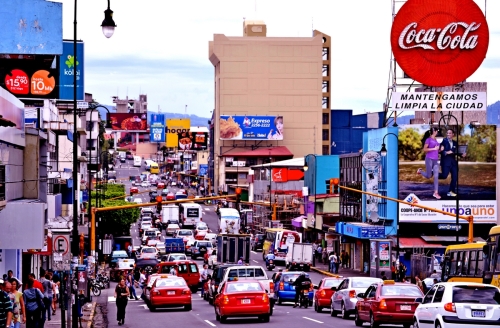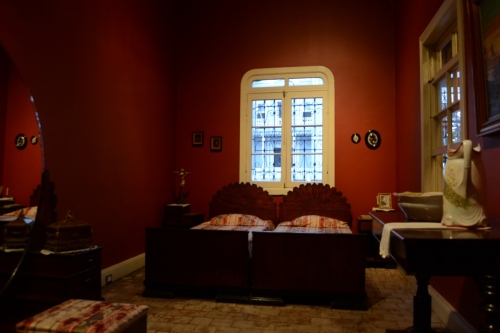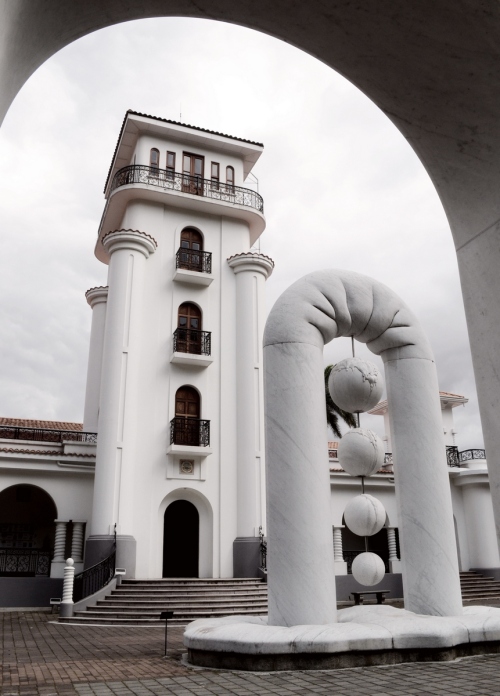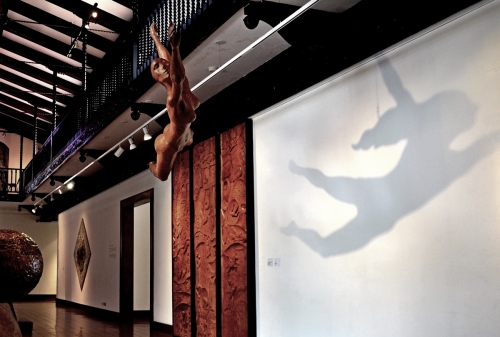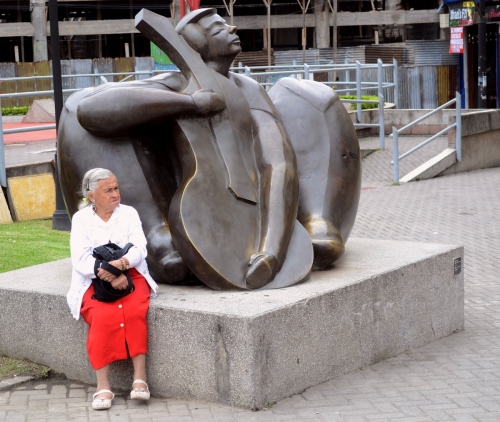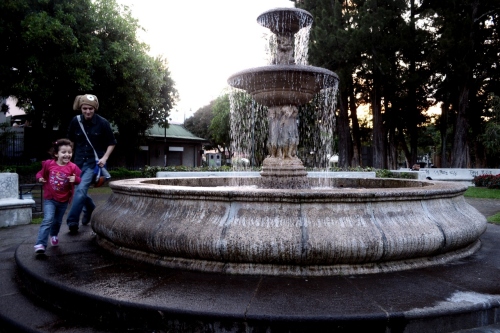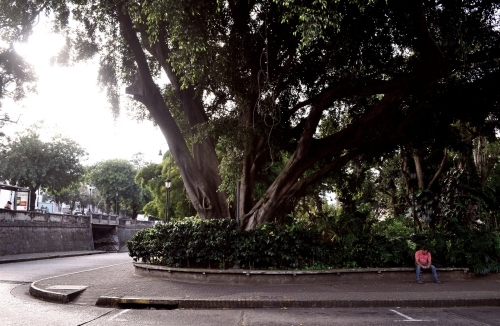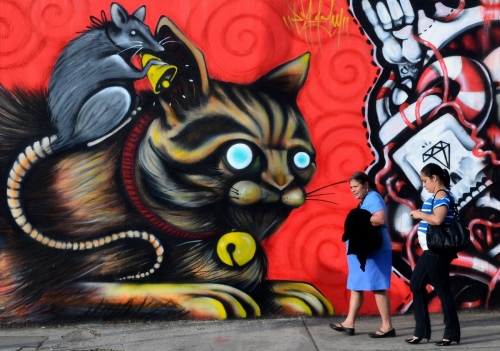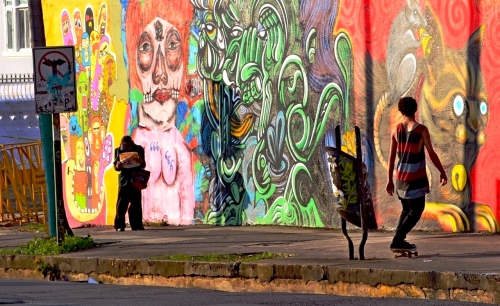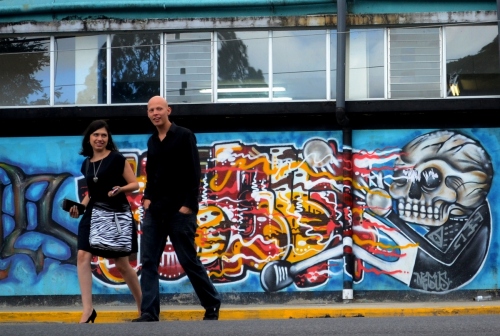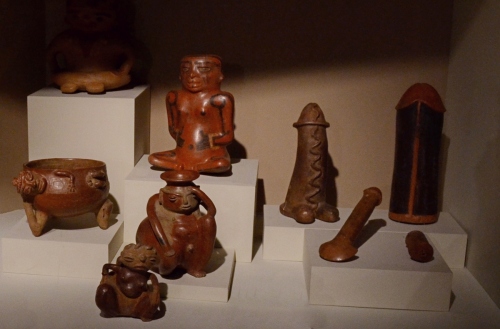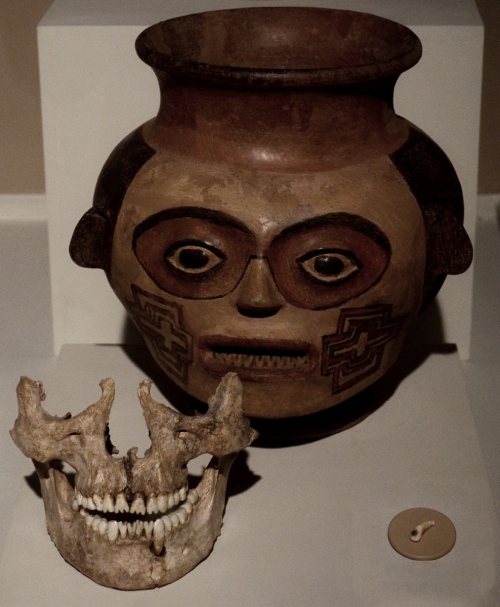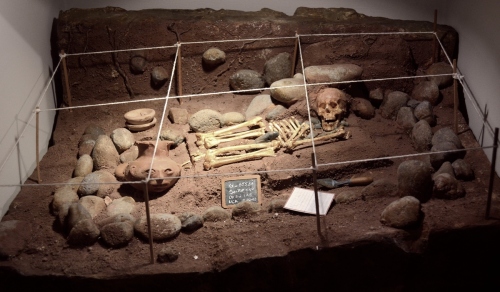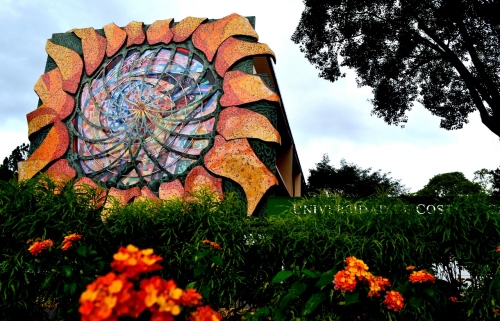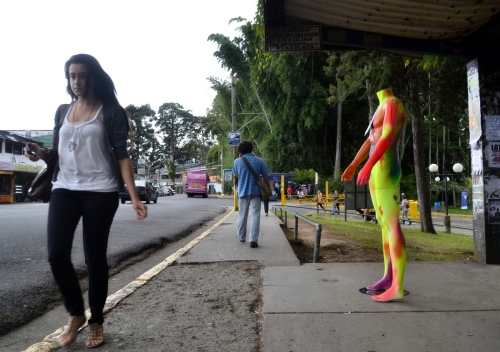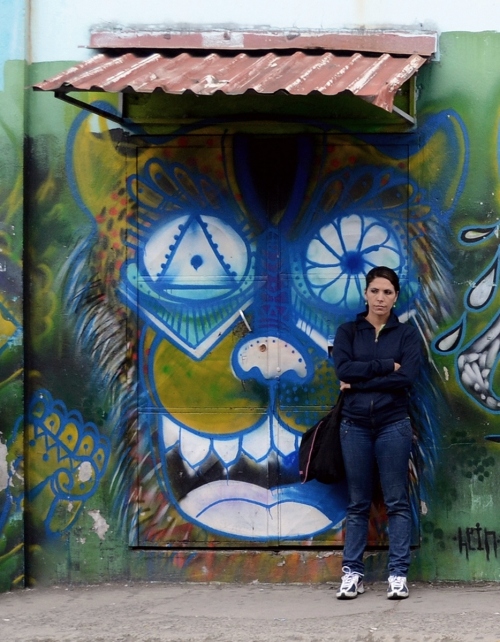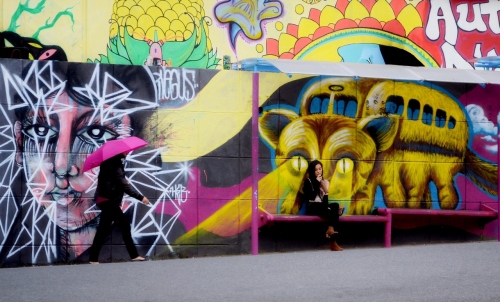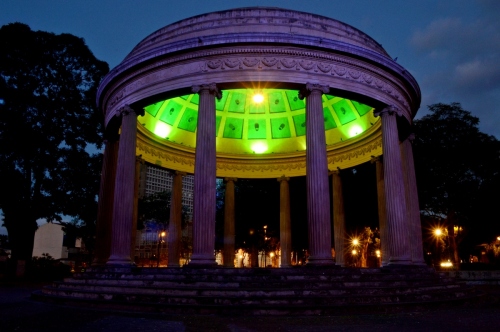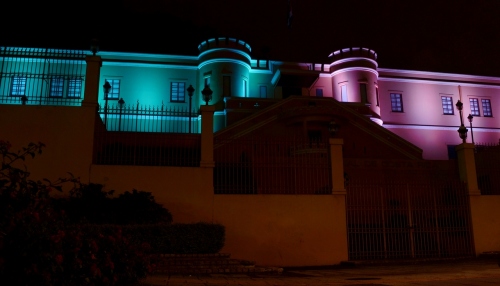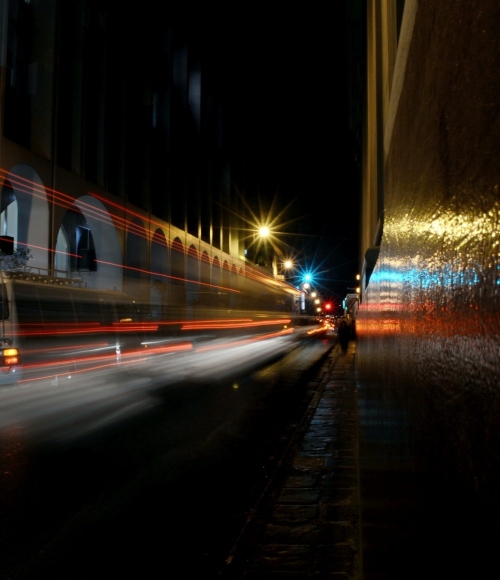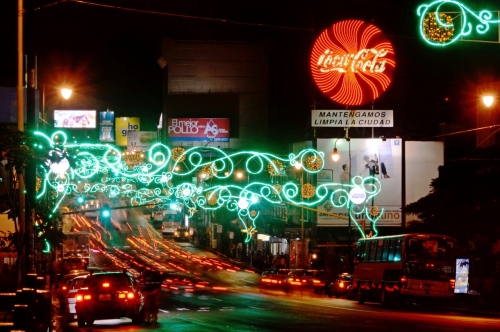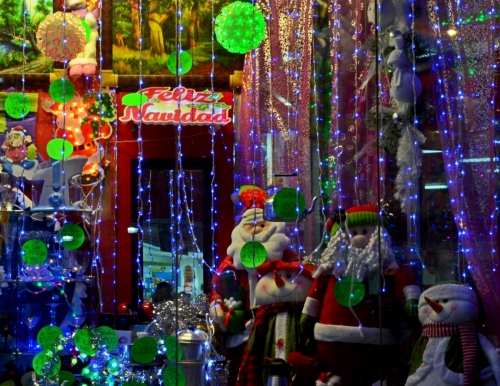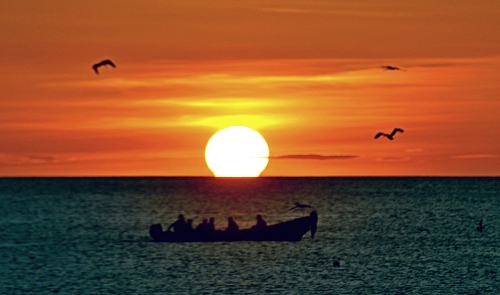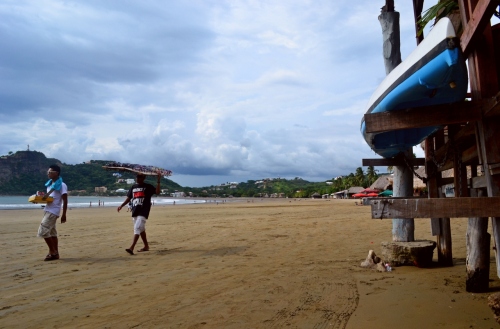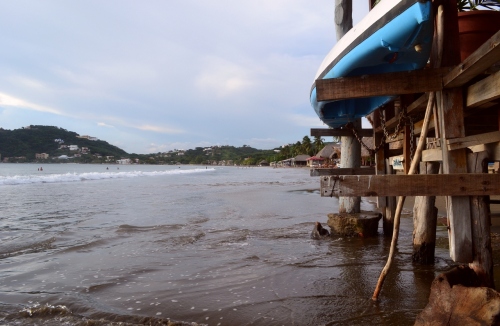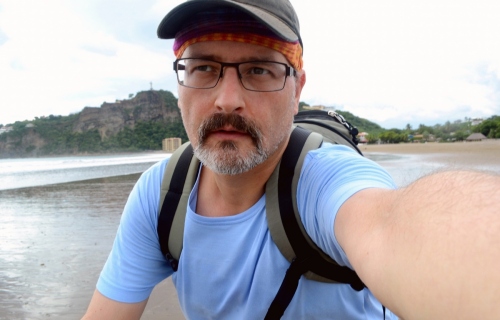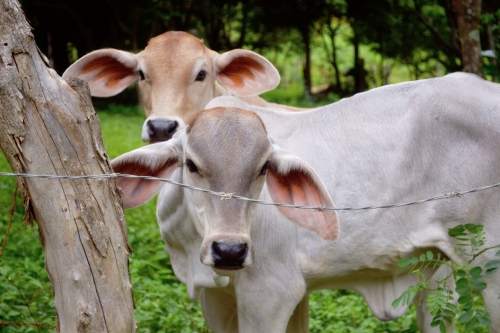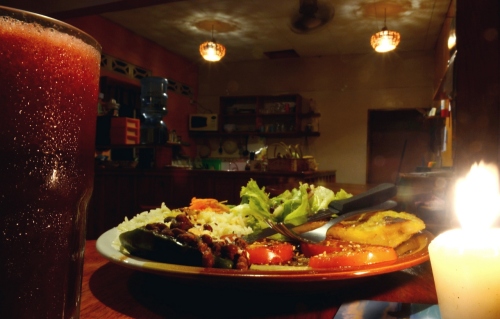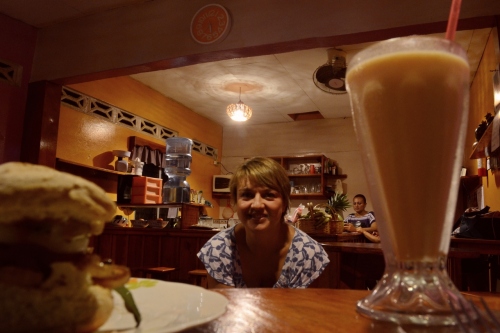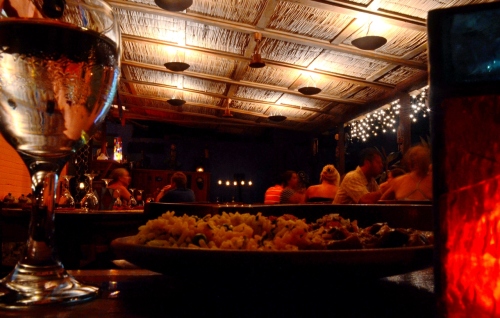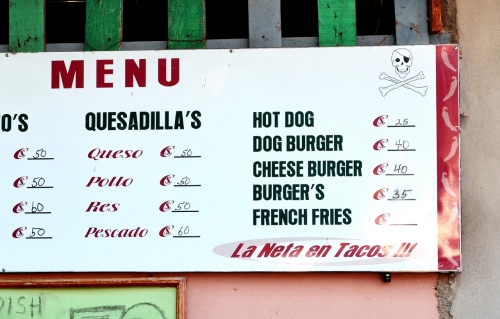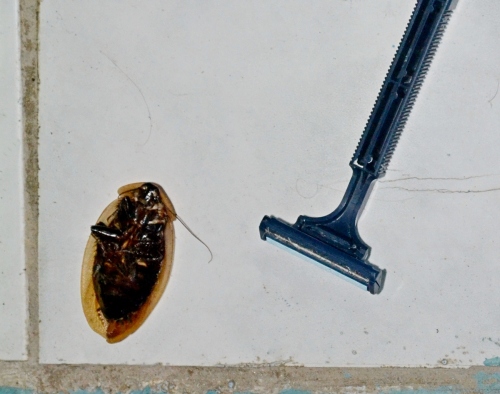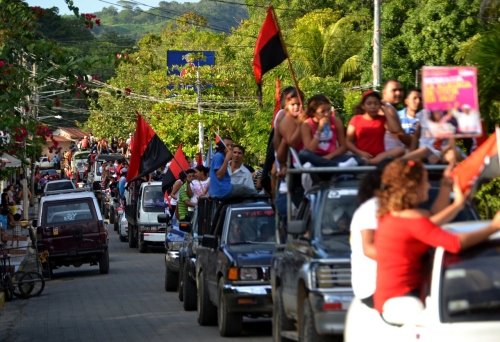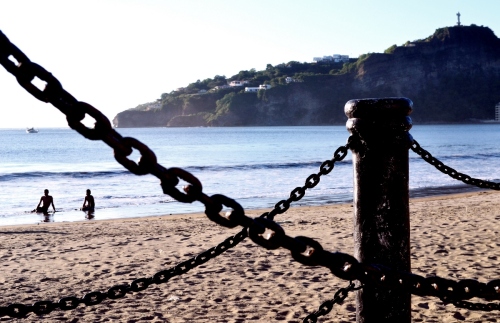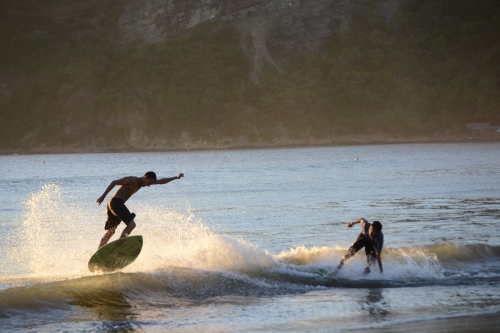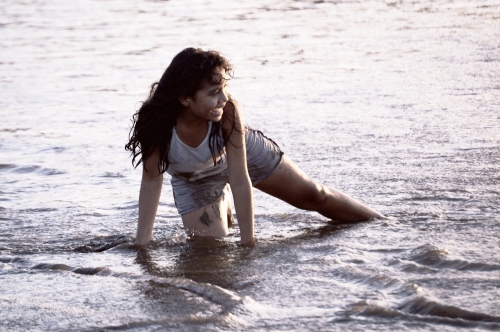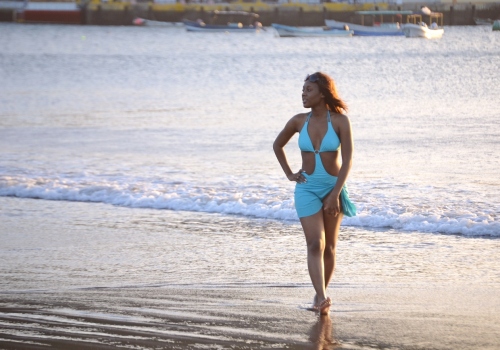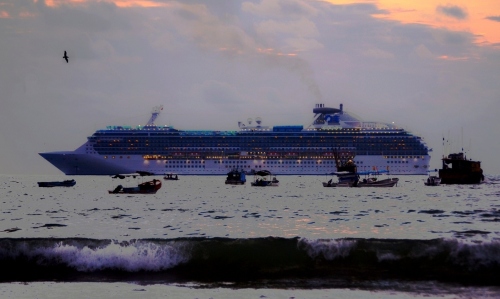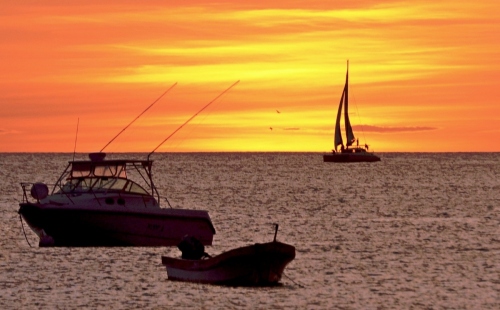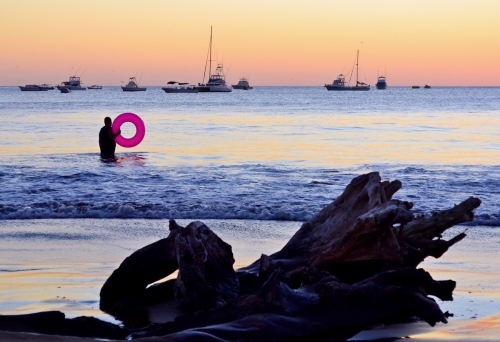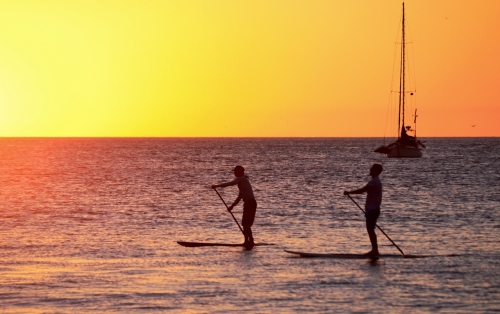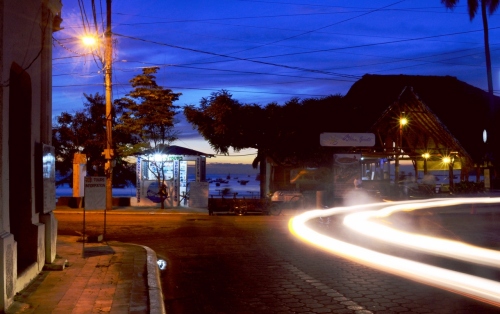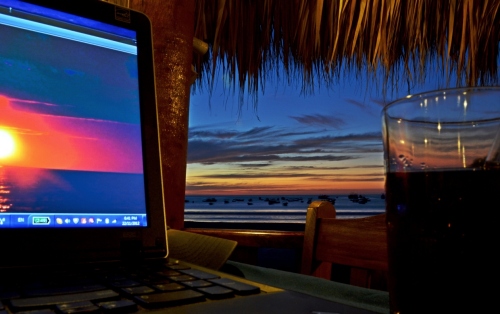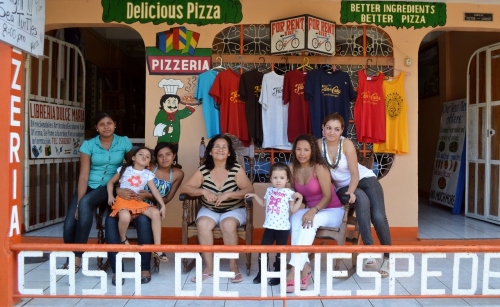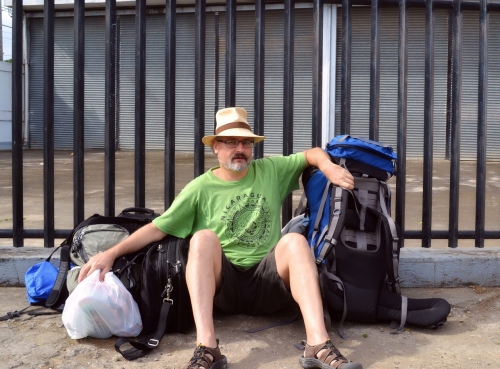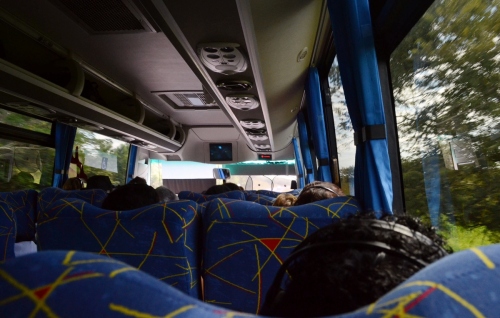
One thing I neglected to mention in my previous Managua post was that on my second last day in that city an eccentric, highly voluble, chrome domed Caucasian American of roughly my vintage dropped into my orbit– somewhere in the vicinity of the hotel pool I think– and proceeded to regal me with stories of global travels, his prolific artwork and expansive plans for an international travel network geared to edgy, off kilter, unconventional expats like himself.
Sadly, and somewhat inevitably, it transpired that “Miguel”–as he took to calling himself–was flat broke and trying to cobble together a few dollars before winding up his grand tour in Leon. After squeezing a free lunch out of me at Feed Bag Central in exchange for a Spanish grammar book, he set to unloading on me some of his middling artwork (mostly doodles of young curvy women) as well as the remaining contents of his beaten up travel sack. Out came the sundry items accompanied by his sales pitch for each: a hammock… “five dollars, man, take it wherever you go and sleep like a baby”…a leather wineskin…a miner’s headlight, and, finally, an aerosol can of Tinactin foot spray—“Use it like mace, man; coupla dudes jump you from a motorbike, spray it right in there face and run!”
I nodded sympathetically throughout his animated pitch, then finally shook my head, explaining that I was just another poor wanderer like himself. He considered this for a moment, then remarked, “Three dollars for the hammock.”
When I let slip that I was also going to Leon, Miguel spewed forth a torrent of information on where to get the various buses (local buses, shuttle buses, micro-buses…) how much each was, what the schedules were, before helpfully offering to catch the bus with me. “We could share a cab to the bus station,” he enthused. And the fare would be on me, I silently added.
During the two hour trip to Leon, in the sardine can “Micro-bus”, Miguel continued to bray on about his remaining travel plans, his strategy for returning to the USA penniless as a newborn, and whether there might be a hostel in Leon that would accept a Visa card. (He didn’t specify his Visa card). Meanwhile, I figured out a strategy to lose him once we touched ground in Leon. (I had no desire for his artwork or athlete’s foot spray)
Finally, the bursting at the seams bus shuddered to a stop in Leon’s teaming Mercado, immediately drawing a quivering phalanx of pedicab drivers, bristling for our business. I quickly nabbed a friendly driver, hoisted my bags into his cab and commanded him forth with the one hostel name I could recall from the Lonely Planet bible. “Hostel Sonati”. Miguel, meanwhile, was trying to explain to the locals in fractured Spanglish his cash and Visa card predicament. My driver pedaled away and I was free…well, for now, anyway—Leon is a small place.

Golden Sonati honey from nature’s friendliest bees
Hostel Sonati turned out to be the ideal choice. Once inside its gently welcoming confines, I was immediately set at ease by both the remarkably pleasant and helpful volunteer at the desk, and the peaceful, sociable vibe of the place. Arrayed around a rustic, tranquil courtyard, and peppered with the artwork of local children, the place just exudes tolerance, peace, and good will from its every pore. I would even venture that the golden organic honey for sale at the front desk is harvested from the world’s friendliest bees.
Unfortunately, all the private rooms in the main building were occupied so I had to settle for a Spartan little broom closet in the annex building across the street. Well, nothing is ever really perfect when traveling on the cheap; it would do for the night.
I hurriedly unpacked and set about an immediate plan to find a vegetarian restaurant while there was still daylight – not an easy task at the best of times in Nicaragua. Come nightfall, my horrid sense of direction, lack of familiarity with the city, combined with the total absence of street signs and no recognizable land marks would render me as lost as a rat in a maze.
I got the name of a nearby place from the helpful evening desk volunteer, Carlos, and proceeded into the darkening grid of streets. But the “Real Earth Cafe” simply didn’t seem to exist where it was supposed to be. I tried other streets, took photos of various street corners on the way – my form of digital breadcrumbs – to orient my way back. Soon, the sunset dimmed for good and with it the one landmark I could depend on. Why couldn’t there have been a compass in the bottom of Miguel’s magic travel bag?

First digital breadcrumb
After circling around some more I found myself back at Sonati. How did Stanley ever find Dr. Livingston I wondered? At the front desk I sheepishly confessed my failure to Carlos and had him place a prominent dot on the map where the restaurant should be. Out into wilds once more I went, determined to succeed this time. Then I spotted the name “Real Earth” scrawled in tiny letters on a sidewalk chalkboard, contradicting the big permanent sign that blared out, “Volcano Café”. OK, so they changed their name and didn’t tell anyone. Of course I had walked past this place at least three times prior to this.
Once inside I didn’t need to be told that this was strictly a pizzeria, not a veggie place, though they did have vegetarian pizza. Well, alright, I’ll kick the non-gluten regimen for one night and gulp down an extra glass of Metamucil and ground flax when I get back to the hostel.

Tasty glutens in Volcano Cafe
The pizza was actually pretty good–not worth getting hopelessly lost and having an existential crisis over, but pretty damn tasty.
Back on the nocturnal streets, I decided to abandon any more exploration until tomorrow, and headed back to my broom closet for the night, checking my digital breadcrumbs along the way.

Blue lights heading home.

Be it ever so humble
The Sonati annex was nearly empty that night and so it was remarkably quiet–which was a relief because I needed the sleep. I had heard a lot of good things about Leon and that in many ways it is the heart and soul of Nicaragua and was itching to explore the city and come away with some decent photographs. I was also keen to see how it contrasted with its historic sister city and eternal rival, Granada. If one were to typecast Grenada as the preening, vacuous, arch-conservative, gringo pandering daddy’s girl, Leon would be the rebellious, gritty, artistically inclined black sheep, more interested in fighting for social justice and political change, than polishing her fingernails and waiting for her American ship to come in.
While the cities endlessly fought one another in the 1800s for possession of the national capital (which they both ultimately lost to Managua) Leon emerged in the 1900s as an incubator for the anti-Somoza movement, initiated by local hero Augusto Sandino. The successful 1979 Sandanista revolution would be partly fought in Leon’s streets and federal government buildings. (The moving Museum of the Revolution is located in one–an upcoming post will detail that site)
The contrasting personalities are reflected in the general look of the cities. Leon, though less photogenic on the surface than Granada, is drenched in atmosphere and a kind of gritty, decaying charm. The compact, lively streets, bustling markets, and myriad churches offer a richly varied palette for the eyes and camera.

A dash of colour

Crooked tree market

Pulling his own weight

Nica street food for a dollar
Leon is know for its variety of impressive cathedrals and one of the most distinctive is the Iglesia La Recoleccion, or The Yellow church as it’s more commonly known. Located just a couple of blocks from the hostel, it’s colourful facade served as a conveneient landmark for orienting myself near homebase.

School girls at “The yellow church”.
The surface details seem reminiscent of Gaudi by way of Dr. Seuss. (Well, to this eye at least) It’s plaza is also a fine place to stop and observe the passing scene, and, if necessary, check the time on the recessed clock.

A glance across the plaza

Little show off

4:03 PM
On a slightly different note, and a subject I’ve been meaning to mention since the beginning of this journey, is how frequently I find myself with a heavy heart when exploring the various towns and cities of this region due to the unavoidable presence of so many street dogs.

The street dogs of Leon
Sadly, there is little available money or will to deal with the problem humanely, and in the past the local authorities would resort to mass poisoning to cull the exploding population–though apparently this tactic is falling out of favour. Check this link for more information on the issue. http://www.hsi.org/campaigns/protecting_street_animals/

No blue ribbons for this little guy
I returned to the hostel early that day to confirm that a room in the main building would be available. It turned out to be the largest room in the place, and the most unique of the entire trip.
It was during the process of shuttling my belongings from across the street to the new digs, that I heard a familiar voice, a bellowing American twang coming from one of the dorms lining the courtyard. The subject of hammocks was being discussed. (Well, it was a pretty sided conversation.)
And then that great bald head popped out of the dorm. Miguel gaped at me, wide eyed for a moment, then blurted out in disbelief what great luck it was to find me here and what a chilled out groovy hostel this was. He then resumed auctioning off– to whoever was in earshot– his various belongings and artwork–which I was already overly familiar with. One of the other hostel guests emerged from the dorm, regarded me quizzically, as in “you know this guy?” or, more damningly, “He’s with you?” I shrugged, and muttered, “it’s a long story…”
Turned out that he had arrived at the Sonati shortly after I had, but as I was in the annex our paths didn’t cross until now. No doubt he’s been busting everyone’s chops with his auction efforts, but not finding any takers, he resumed course with me. I finally relented and gave him 5 dollars for the wineskin upon which he threw in the Athlete’s Foot spray for free. “Carry it with you, man! You can use it like mace!”
“I know, I know, but we’re not in Managua any more”.
Miguel receded back into his dorm, while I set things up in my new room. Then a funny thing happened: while I was back in the courtyard, chatting with some of the other folks, Miguel came out of his dorm with his travel sack, winked at me as he glided by, made a beeline for the exit and slipped away, never to be seen again. Turned out he hadn’t paid his bill. And his real name was Michael. Guess that’s not much of a stretch.
Even though the bill was only ten bucks or so, I felt guilty by association, not so much for his first coming here, but watching him sneak off and not saying anything. Sonati is not the kind of place you want to stiff—they radiate nothing but peace, good will and responsible environmental stewardship. Just taking a shower with the recycled rainwater can make one feel slightly less cynical. Indeed, the place doesn’t even bill itself as a hostel but, rather, an art and educational project for local kids; bailing on the bill isn’t like stiffing Howard Johnston’s, it’s more like making off with the orphanage milk fund.

The happiest water tank in town!

Nothing is wasted

Communal kitchen with CD mosaics
Well, with Michael out of the picture things felt immediately more peaceful. I explained my brief history with him to some of the other volunteers and guests (in many cases they are one and the same) until the conversation segued into other, more interesting subjects. Some time later, a fierce game of Texas Hold-em poker with various small items (toothpicks, mixed nuts) as winnings broke out, the cheap rum flowed, and a merry time was had by all.
Truth is, this has been a pretty solitary trip since Clemente’s departure–which seems a lifetime ago now–and it was nice to interact with others–especially this crew. Though most of them were much younger than me, they were also quirky, creative, fun and non-judgemental. In most backpacker hostels I feel like an aging, clueless imposter, and am inclined to be somewhat aloof. But not at this one. Imagine that.
At night, in my art and mosaic festooned room, I studied the extensive shell collection and felt strangely at home.

My favourite room

Heart of glass

Within these shells…
<> <> <>
Stay tuned for “Leon, Part 2″…
